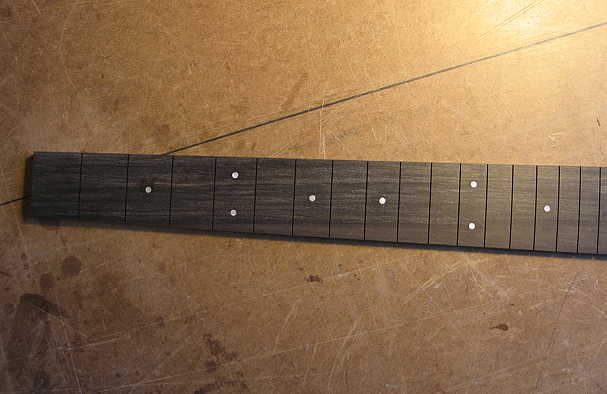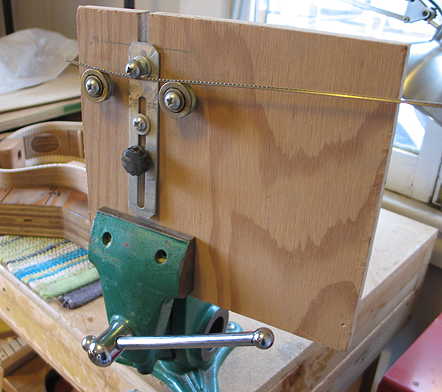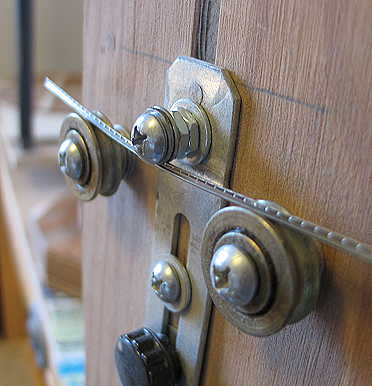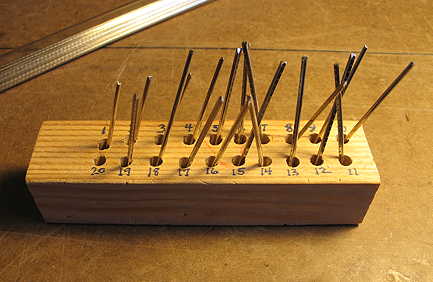(4) Finally, I have glued in the inlay dots with superglue, filed the dots down flush with the fingerboard, and sanded it all down smooth, using a 16" radius block and 320-grit sandpaper.

|
|
(5) Next, I use this homemade fret bender to put a slight curve in the fretwire, since my fingerboard has that 16" radius.

|
|
Here's a closeup of how the fretwire is forced into a curve by its passing through this contraption I've made. The fret tang runs between two closely-placed (but a little loose) washers in the center section. Since the two outer rollers (which support the fret crown) are placed lower than the middle section, the fretwire is forced into that slight curve, as I push the fretwire from right to left. If I needed a different radius curve, I would move the middle section up or down.

|
|
(6) After I've radiused the fretwire, I use an end nipper to cut the frets for each slot, slightly oversized.

|